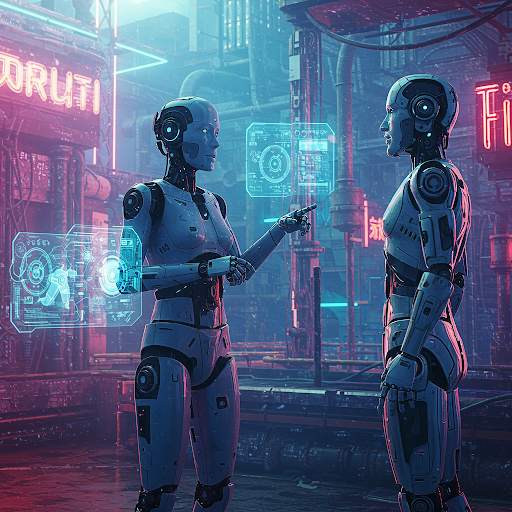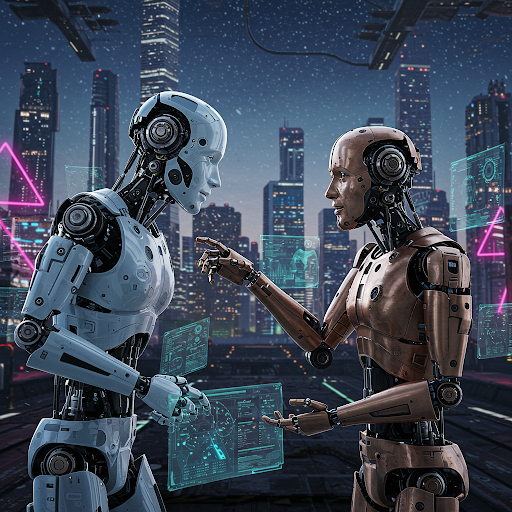
Three whole years after it was launched, the ARC Prize competition bid farewell to convention, introducing a mind-boggling challenge in a bid to put up creative AI performances, while promising a prize fund of $1 million, with the launch of ARC-AGI-2. The transition from AI as a tool that only executes single tasks to a machine that can adapt and become more human-like is still underway. Porat (2029), even using a definition to highlight the difference between path-based and field-based AI, calls “the possibility of an AI with general intelligence” into question. One impressive indicator is the benchmark called ARC-AGI-2. It is such a sophisticated tool that it is even capable of giving immediate feedback.
The ARC Prize community has this to say:
“A human engineer is an AGI Benchmark setting it as a functional requirement for expert systems. Although it is relatively easy to tell apart which tasks are most challenging for AI, good benchmarks for AGIs are more effective when they also steer the direction of the research as well as they inform the proposed methods.” – Super et al. (2019)
Thus, multiple metrics on the basis of the number of interesting high-dimensions are used in-depth analysis to understand the sensitivity of AGI to different relevant operational characteristics. “Good AGI benchmarks serve as valuable progress measures. A stronger one thoroughly points out the capabilities. A top-notch AGI benchmark does more than just giving evidence of development; it also promotes investigation and directs innovation.”
Their latest feature is the award they referred to as ARC-AGI-2, which is implemented to get the “best” image in the AGI sector. They celebrate a long-standing rivalry in the field, and the ARC Prize has since been one of the main organizers that act as a navigator to a majority of the puzzles that are the main motivation for researchers in this field. This competition has produced several software, including ARC-AGI-1, which was designed in 2019 with the testing of flexible intelligence. It was no longer detrimental that students could recover given that the majority of the questions could repeat until all of them are correctly answered.
The mission of the ARC Prize is to predict the effect of scientific AI on the acceleration of progress. These benchmarks represent the evolution of technology and are conceived not only to monitor the progress but also to increase creativity through the birth of new ideas.
The appearance of OpenAI’s o3 was among the altering moments in late 2024. They carried out the AI model by including reasoning synthesis engines into it, which marked the union of the symbolic and sub-symbolic OAI. This stage was also important in the way the model started to rely more on logical reasoning rather than simple memory processing. The fact that current AI is inefficient and still needs human support in the training stage makes me believe that AI is far from perfect. For this matter, the quality of adaptability and efficiency is the main issue. That is the reason why the organizers formulated ARC-AGI-2.
ARC-AGI-2 is the epitome of AI power, but it is still able to be comprehended by humans. While the most developed AI reasoning systems remain around 1% efficient on ARC-AGI-2, anyone can work through these problems in less than two tries.
What Sets ARC-AGI Apart?

So how come ARC-AGI can be distinguished from other similar benchmarks out there? The benchmark design philosophy is based on choosing tasks that are “difficult or impossible for AI, yet by humans are relatively easy.” So it is assured that the benchmark not only documents the current status of AI but also points out areas in which AI falls behind humans.
The ARC-AGI-2 benchmark concepts include datasets that have the following key points:
- Symbolic interpretation: AI is poor at semantic equations and focuses just on the form of such equations (e.g., check symmetry).
- Compositional reasoning: AI fails at concurrently applying two interacting rules.
- Contextual rule usage: AI does not extract rules efficiently according to the situations designed, whereas it keeps the same degree patterns only.
The vast majority of the current benchmarks are aimed at superhuman capabilities, therefore testing highly specialized skills at such huge scales that they are not within the human capability to reach. In contrast, ARC-AGI is more on the side of adaptability that characterizes human intelligence and AI’s inability to handle tasks that we find rather trivial. An example of this would be the completion of a natural language text from a given set of question-answer pairs. Human intelligence, up to this point, is barely reasonable.
We should start to think that AGI has arrived. Now not only can AI process tasks requiring solutions, but it can also be efficient. Doing task after task is not enough to define intellect. Besides, humans have to enable AI to do things with the least deployment of resources.
Human vs AI Efficiency
“Human panel efficiency” are some of the examples that show how humans and AI differ. It is quite obvious that humans dislike change. We will also include an indicator of task effectiveness in the upcoming leaderboard so that it will be clearly visible that not only brute force could be taken for good intelligence. ARC Prize aims to be able to say it the best.
ARC Prize 2025: The Marketing Contest
The ARC Prize 2025 marketing contest is going to be presented on the platform Kaggle, opening this week, and thus this year, the grand prize of $1 million will be the highlight. The prizes improve with these key benefits.
In the 2024 series, there were claimed to be 1,500 competitor teams taking part, which resulted in 40 influential papers being published. At this stage, ARC Prize has inflated the competition with a higher amount of money, and therefore, they have also managed to get a higher quantity of successful teams in the previous year.
ARC Prize also expresses its opinion that the next fundamental innovations in the field will be caused by the appearance of fresh insight, which is schools of thought different from scaling the existing gadgets. It will not be long until a new machine comes and sets the tone in the world of technology. A new kind of machine will appear, which doesn’t exist as a result of the final developments of today but comes from a group of free-thinking humans who attempt with AI to imagine the unimaginable.
“Form filling on AI interfaces without any restriction” could end this struggle. This is likely to become more apparent in the next two years. Perhaps then there will be an AI resort. Perhaps the next big thing will come from a small garage. Perhaps we will be a part of social change ourselves! The statement “AI will play a significant role in the Earth’s next evolution” is the forerunner of the common epiphany of a new era of the Earth.
